Afrofuturism as Liberation and Design with Ingrid LaFleur
Key Points
-
Afrofuturism can inspire and empower Black students by integrating cultural, historical, and futuristic elements into education, promoting creative problem-solving and innovative thinking.
-
Schools should foster environments that nurture creativity and inclusivity, ensuring that marginalized students see themselves represented and celebrated in their learning spaces.
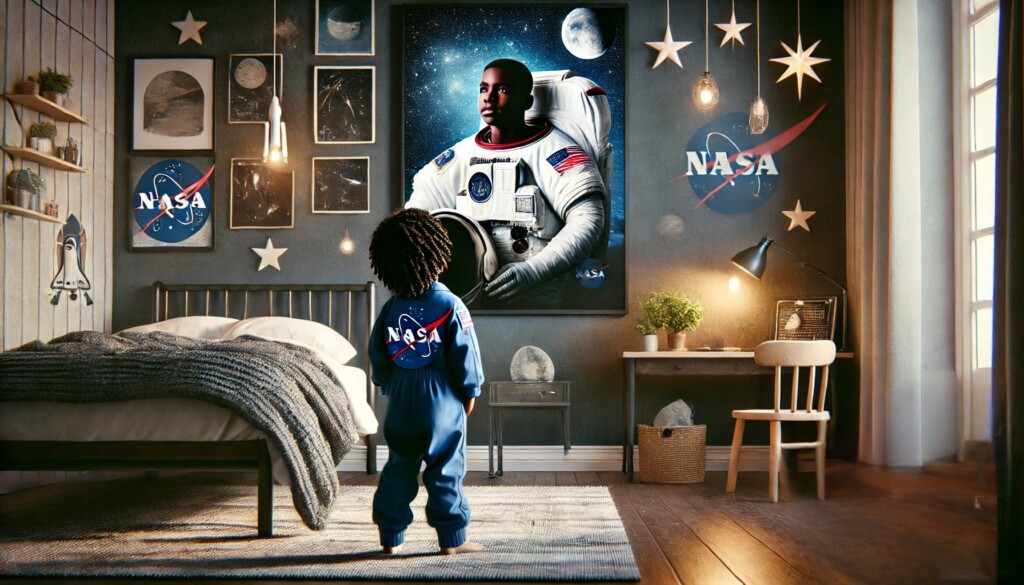
I recently visited the National Museum of African-American History and Culture In Washington, D.C. As I walked through the Afrofuturism exhibit, it was inspiring to see how out-of-this-world thinking has allowed Black visionaries to create new futures for Black children. Writer Greg Tate said, “Being Black in America is a science fiction experience.” Through the lens of Afrofuturism, new dreams are closer to possible than ever before.
Earlier this year, a viral trend called #BlackatNASA took over social media. Tyrone Jacobs Jr. shared his company headshot that he was proud of and it prominently featured his hair in locs. Millions of views later, people were celebrating him and other NASA employees which added to the trend of showcasing black excellence in a STEM field at a globally recognized organization. One person commented that her young son saw the trend, who also has locs and has always wanted to work at NASA.
The TikTok trend as well as the continued highlights on black excellence and Afrofuturism continue to shine a light on a world where systemic inequalities still exist and black boys and girls don’t see themselves in every space, Afrofuturism empowers individuals from marginalized communities to envision a future where they are not only represented but also celebrated for their unique contributions.
Afrofuturism combines elements of culture, history, technology, and imagination to promote innovative thinking and creative problem-solving. This approach is essential in addressing complex issues that impact our society, particularly in education, where new ideas and methods are needed to overcome persistent challenges.
I had the chance to chat with Ingrid LaFleur, a globally recognized curator, design innovationist and Afrofuturist who is committed to exploring and implementing forward-thinking solutions across multidisciplinary industries including but not limited to art, technology, education, social enterprise, and finance.
LaFleur believes that, “Afrofuturism is a cultural movement that imagines Black people in the future, however, the construction of that future relies on the wisdom of the ancient and near pasts of Africa and the African diaspora.” Enjoy our conversation below, I know I did.
Outline
- Afrofuturism as a Liberation Movement
- Bridging the Gap Between Fiction and Reality
- The Dinkinesh Method
- Empowering Students to Change Their Stories
- Future-Thinking in Education
Afrofuturism as a Liberation Movement
Shawnee Caruthers: One of the things I referenced in the introduction was about Afrofuturism being a liberation movement. How does that resonate with you?
Ingrid LaFleur: Oh, yeah, that’s exactly its purpose. It’s to not only serve as a point of liberation but also to create alternate destinies for Black bodies. What I mean by that is we have a particular destiny that is being shaped by the stories of our societies around the world. Oftentimes, there are elements of anti-Blackness or subjugation embedded in those stories.
So we believe that we can only attain certain things based on our positioning today. Afrofuturism is surreal; it’s science fiction. Magical realism comes into play to break us out of all of those narratives that we’re most familiar with and bring us into spaces of magic that we would think are completely impossible.
And I think that opening up is the true freedom. That’s the true liberation that comes into play, albeit temporary, right? Because it is in our imagination, and we do live in a world where systems latent with, for instance, racism and sexism are surrounding and controlling our lives. So my work really is to bring those beautiful elements of Afrofuturist thought that we see within the literature, music, and design and see how that looks in practice. What does it look like in actually creating these kinds of new destinies?
Bridging the Gap Between Fiction and Reality
Shawnee Caruthers: You referenced the magical part of it. We see a lot of it in movies and science fiction, like Octavia Butler and Wakanda, with these really grand worlds where it feels like Black people are excelling in all these different industries. But sometimes people don’t understand how to take it from that world and make it relatable back to what it looks like in today’s ecosystem. How do we get it from that magical place to something tangible?
Ingrid LaFleur: Yeah, I think my journey through Afrofuturism and becoming a futurist highlights that tangibility. I ran for mayor of Detroit in 2017, and it was then that I was really looking at the economic status of the city, where the lower-income and working poor made up 64 percent of the city. Instead of thinking with this baseline narrative of “people need jobs,” in a place where people were being laid off constantly, jobs were not the narrative to go with, right? There’s no stability or safety there.
I began to think about: what would it look like for us to create an alternate economy in a city that is majority Black, based on our values and the way we move and use currency? That, I think, is the way to go into this space of the impossible, where there’s a lot of risk, for sure. But to leapfrog these technologies or these institutions, like the banking system that’s discriminating against us, and figure out a different way to ensure that collectively we have a prosperous future.
So that was just one example in an economy, but I wanted more. I am in grad school at the University of Houston in foresight, so I can learn the different methodologies for researching the future. I think that is important. The more informed we are, especially if you’re part of a marginalized community, the more prepared and proactive we can be right now.
We’re constantly just trying to put out fires of the moment, and there are a lot of fires, right? My support goes to those activists on the front lines, really trying to put out those fires. How do we make sure that this innovation is inclusive? That is through exposure and education. It is absolutely necessary for our youth to know what is happening, what’s being built, what’s being created, even the craziest things, so they’ll be inspired and work within that space. Then there’s more balance and harmony when that innovation comes to fruition.
The Dinkinesh Method
Shawnee Caruthers: Listening to you talk is inspiring in terms of what the future could be when you think like an Afrofuturist or just a futurist in general. But sometimes people think it doesn’t feel attainable for them, that they don’t necessarily consider themselves to be a futurist. But through that foresight method you referenced, that you’re working on now, it feels more attainable. Can you walk us through what that foresight method is and what the framework is?
Ingrid LaFleur: Definitely. I brought together Afrofuturism, which is the inspiration point, and foresight methodologies, which are hardcore ways of understanding what’s on our horizon. Bringing the two together, I created the Dinkinesh Method. The Dinkinesh Method has five different portals, as I call them because it is a mind-shifting space. The purpose of the method is to reshape your consciousness, which is the foundation for everything. You are making decisions and perceiving the world based on this consciousness.
The beginning starts with you as the individual, creating a new myth about yourself to disrupt those narratives and stories that have held you back about who you are or what you’re capable of. You can call this the development of the superhero self or the mythical self. It is inspired by jazz musician Sun Ra, who said he was from the planet Saturn and lived, wore clothes, and ate with all of that in mind. He lived his myth. It’s possible for us to live our myth as well.
The second section is “Dark Matter.” That’s when we get into systems thinking and different concepts informing our world, like racial capitalism and necropolitics. Why? Because we don’t want to imagine a system that is already causing us harm. What often happens is people just jump in and imagine based on the limitations they’ve created for themselves, and they repeat the same thing they understand. If you only understand capitalism, you will only believe that’s the only way we can exist in the future.
When there are alternate systems we can use, and capitalism, you might want to have a deeper understanding of how it functions. So we can create new ways of being, interacting, and distributing resources.
Then there’s “Ultra Destiny,” where your future research skills really come into play. This gets into the emerging tech and science, bringing all the other elements from the other portals together to start world-building.
Finally, there is “The Continuum,” because the future is not a destination. There is no end point; it is a continuum, which a lot of Afrofuturists discuss. That is the nurturing of this consciousness, this way of perceiving the world more and more every day, and really challenging yourself about how you are imagining futures, discussing them, the language you are using, and when you become a little dystopian or pessimistic, and why. Really challenging those notions so you can move into that liberated space Afrofuturism wants you to be in.
Empowering Students to Change Their Stories
Shawnee Caruthers: As you were talking, I was trying to frame this in the world of a student and think about what that would look like for a student to think about the stories they are telling themselves that might stand in the way of them imagining their possible futures. Do you have any suggestions on how students can get into that space of changing their mindset to change their story? And the other half of that is sometimes it feels like a privilege that some students, depending on their stories, don’t necessarily have.
So how do you also move beyond that?
Ingrid LaFleur: Oh, man. That’s a tricky situation because I can see youth feeling uncomfortable or silly. When I first returned to Detroit almost 15 years ago, I taught a group of young Black youth from 10th to 12th grade. I had them choose a superhero name right off the bat. I didn’t go into creating a new story about ourselves or anything like that. I just said, in this class, you are called by your superhero name only.
In the beginning, they were a little shy and quiet. But then one person mentioned a superhero they could liken themselves to, and someone else said, in another universe, they are actually this kind of being. The conversation started moving, and it totally went beyond my head. What I noticed over time, and what I was told by the parents, was that calling each other by that superhero name only within the class made them feel like they were that superhero. It went from the parent trying to get them out of bed and ready to come to my course, to them waiting by the door, saying, “Mom, hurry.” They were excited.
You can create the mythical place in your classroom by just changing what they are called. Of course, I have my own superhero name, so they call me that name. One day, I said, “I love you guys so much,” and they replied, “We love you too, Dr. Shiluva.” I was like, “Yes, this is my utopia.”
Shawnee Caruthers: I love that and the confidence it can bring to youth who aren’t necessarily there yet within themselves and don’t have those relations within themselves. Putting on a different persona that they choose feels empowering and can make all the difference. I have so many thoughts for teachers and how they start the year. I love hearing that. One of the other things you referenced was living their myths or living your myth in your foresight method. How does that play in a world where truth is so hard to come by, in terms of media literacy and all the resources we have to access information? How does that play into living your myth?
Ingrid LaFleur: Sun Ra would say we’re already living a myth. He said the world we live in is a mythocracy. It’s true if you think about it; fact doesn’t seem to be working anymore. If you think about how we even perceive our histories, nostalgia, it’s ignoring all the violence or discrimination that might have happened. In terms of education, we don’t want the transatlantic slave trade to be a myth, right? That’s a fact. Being clear about when to use it and when not to is important. I see living myth as an individual thing in terms of how to shift how I engage the world. If I can see the world through a utopian lens, I’ll act in a more positive way, bring more positive energy into the world, and probably receive that back.
Future-Thinking in Education
Shawnee Caruthers: As we think about those realms, we may be living in a myth now, and we can create a new one. How do we use that thinking, or that perspective or lens, to think about what the next iteration of education looks like for students? What does it feel and look like from this framework?
Ingrid LaFleur: I gave a workshop for an African American Leadership Institute recently, looking at the future of education. Two groups, separately without talking to each other, developed their visions. The first thing you see in their images of the future is that they’re all outside. As a teacher, you might think, “I work in a school building; what can I do?” But that’s saying we need a new environment to teach our children. It’s difficult to teach children when there are cement blocks, and fluorescent lighting, and they’re told to sit still. Even as a teacher, it’s painful to require that of our kids. We want them to be liberated thinkers, but physically they’re not in environments nurturing creative thinking.
The other thing is the collapsing of subjects. They wanted to integrate english, math, and science to show how they’re all connected, using ancient African and African diasporic stories to support that approach. That was exciting for me because it’s very Afrofuturist without me suggesting or pushing it. It’s an analysis of how we truly educate our children and the best ways for them to learn, especially those in marginalized communities. Those are moonshots, but we can bring elements into the now. Is there a way to start a garden at your school and have children learn about nature, sacred geometry, and physics?
Another point is all children need to learn how to code. Other countries are teaching coding at age five. What does that mean for our future in the U.S.? We’re already behind because they’ve been doing that for a generation. We’re a generation behind children already equipped and taking coding seriously. It doesn’t matter if you want to be a painter or dancer or think you’re outside of tech; nothing is outside of tech anymore. Everything is connected to tech and emerging science, so everyone needs to know these things. It’s almost a state of emergency to protect our children of color especially.
Shawnee Caruthers: I appreciate you surfacing that because I wondered what we needed to embed in our K-12 systems to teach students how to be future thinkers. We talk a lot about the throughline of entrepreneurship and entrepreneurial mindset, but maybe not enough about the futures mindset. When you said every kid needs to learn how to code and hack and have critical analysis, I think that’s a great starting point. Are there other components we need to embed into schools for students to inherently be futures thinkers?
Ingrid LaFleur: Emotional intelligence is extremely important. Jack Ma, head of Alibaba, says soft skills are so important: understanding, compassion, love, listening skills, and human engagement. As tech grows and innovation advances, how we relate and understand each other becomes even more critical. Afrofuturism creates that grounding, and spirituality is essential, not necessarily religion, but spirituality. Understanding that as a part of being human helps connect us to each other and all living beings.
Shawnee Caruthers: How do we go a level up? We talked about within classrooms, but leaders and public officials, district leaders, also need to understand how to incorporate that thinking for themselves so it can trickle down into the system. How do we build that skill set in our leaders?
Ingrid LaFleur: Definitely. They probably need to take futures thinking workshops to begin some of the unlearning. Seriously, I always say within city government, a historian and a futurist need to be on staff. It’s the same with our school board. Having internal research available to you is important in understanding the future of education. There’s the meta of the future of education, but then there’s the micro of where we live. Right now, I’m in rural Louisiana, so how we discuss education here is different from a big city like Detroit. Localizing it is essential, having a future thinker equipped with research and understanding what’s on the horizon for rural America. The pandemic showed that children here lacked internet access, so they couldn’t continue studies at home. They did hotspots and other things to get access. If we had a futurist on staff, this would have been taken care of. The internet connection should have already been there; the fiber was laid down but not activated. Understanding a pandemic, futurists have talked about global pandemics. That’s not new. How do we ensure that information comes down and becomes concrete? If futurists talk about a global pandemic, what does that mean for this town? How will we function and keep children engaged if we get shut down? There are more pandemics coming, unfortunately. We have to stay prepared and develop virtual systems that are resilient and can evolve based on what’s happening on a larger scale.
Shawnee Caruthers: Thank you for the spoiler alert that there will be more pandemics. Futurists won’t be surprised. That’s the theme: futurists won’t be surprised.
As we think about future career clusters and how industries are morphing, one thing you surfaced was having a futurist on staff as a norm moving forward. I appreciate this conversation and you highlighting that the future looks different for everyone, whether in rural Louisiana or a major city like Detroit or New York. It’s a skill set anyone can build, and we need to bring it into classrooms in a real way as we push on critical analysis, research, problem-finding, and impact. Thank you for this insightful conversation. I’ll carry with me the idea of changing our stories, being our own superheroes, and activating our power in the most real way. With that, we can change our future and the future of many generations. Thank you, Ingrid.
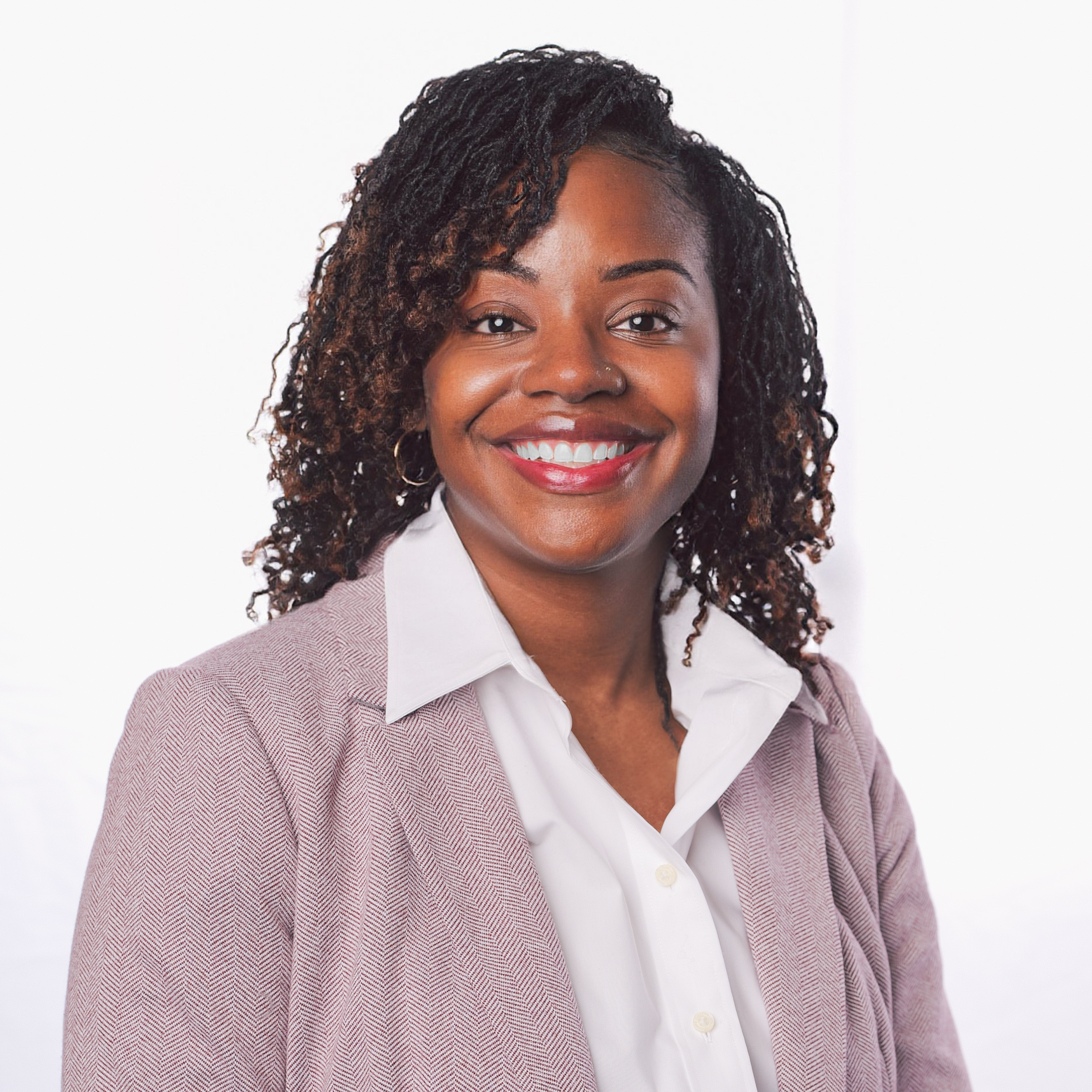



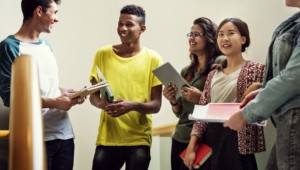
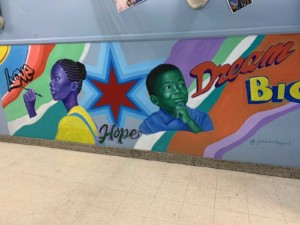
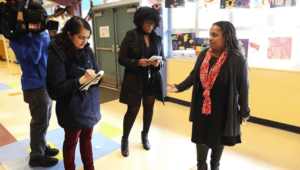
0 Comments
Leave a Comment
Your email address will not be published. All fields are required.